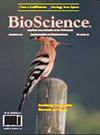Agronomic characteristics and optimized sweet potato root production in monoculture under green manuring
IF 0.6
4区 农林科学
引用次数: 0
Abstract
One of the challenges of the scientific research on sweet potatoes in semi-arid environments is to increase biomass amounts of spontaneous species from the Caatinga biome, such as hairy woodrose (Merremia aegyptia L.) and roostertree (Calotropis procera Ait.), for use as green fertilizers during cultivation. Therefore, this study aimed to agronomically and economically optimize the agronomic characteristics of sweet potato root production in a monoculture, fertilized with equal amounts of biomass mixture of these spontaneous species, over two years of cultivation. The experimental design was complete randomized blocks with five treatments and five replications. The treatments consisted of equal amounts of hairy woodrose and roostertree biomass at 16, 29, 42, 55, and 68 t ha-1 on a dry basis. An additional sweet potato treatment was planted in each experiment, one without fertilizers (control) and another with mineral fertilizer, to compare with the treatment of maximum physical or economic efficiency. Sweet potato fertilization obtained the maximum optimized productive efficiency by incorporating 46.97 t ha-1 of dry biomass of M. aegyptia and C. procera into the soil. The maximum optimized agroeconomic efficiency (based on net income) of sweet potato cultivation occurred by adding 41.55 t ha-1 of dry biomass of M. aegyptia and C. procera to the soil. Using biomass from the green fertilizers M. aegyptia and C. procera is a viable technology for producers who practice sweet potato monocropping in semi-arid environments.绿色施肥条件下单作甘薯根系生产的农艺特征及优化
半干旱环境下红薯科学研究的挑战之一是增加Caatinga生物群落中自发物种的生物量,如毛木糖(Merremia aegyptia L.)和鸡柳(Calotropis procera Ait.),在种植过程中用作绿色肥料。因此,本研究旨在对单作甘薯根系生产的农艺特性进行农学和经济上的优化,在两年的栽培过程中,施用等量的这些自发物种的生物量混合物。试验设计为完全随机分组,5个处理,5个重复。各处理分别在16、29、42、55和68 t hm -1干地处理毛木糖和鸡柳生物量。在每个试验中,另外种植一种甘薯处理,一种不施肥(对照),另一种施用矿肥,以比较最大物理或经济效率的处理。在甘薯施肥条件下,埃及白僵菌和粗僵菌的干生物量为46.97 t hm -1,获得了最大的优化生产效率。在甘薯种植过程中,向土壤中添加41.55 t hm -1的埃及稻蛾和原叶稻蛾干生物量可获得最大的优化农业经济效益(以净收入为基础)。对于在半干旱环境中实行甘薯单作的生产者来说,利用绿色肥料埃及绿霉和青霉的生物质是一项可行的技术。
本文章由计算机程序翻译,如有差异,请以英文原文为准。
求助全文
约1分钟内获得全文
求助全文
来源期刊

Bioscience Journal
AGRICULTURE, MULTIDISCIPLINARY-AGRONOMY
CiteScore
1.10
自引率
0.00%
发文量
90
期刊介绍:
The Bioscience Journal is an interdisciplinary electronic journal that publishes scientific articles in the areas of Agricultural Sciences, Biological Sciences and Health Sciences. Its mission is to disseminate new knowledge while contributing to the development of science in the country and in the world. The journal is published in a continuous flow, in English. The opinions and concepts expressed in the published articles are the sole responsibility of their authors.
 求助内容:
求助内容: 应助结果提醒方式:
应助结果提醒方式:


